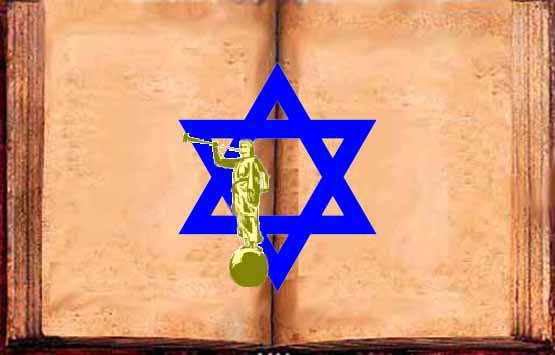

Passover commemorates the Exodus and freedom of the Israelites from ancient Egypt. As described in the Book of Exodus, Passover marks the "birth" of the Children of Israel who become the Jewish nation, as the Jews' ancestors were freed from being slaves of Pharaoh and allowed to become followers of God instead.
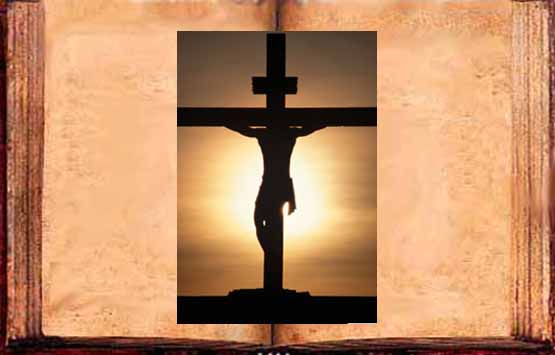
A cross is a geometrical figure consisting of two lines or bars perpendicular to each other, dividing one or two of the lines in half. The lines usually run vertically and horizontally; if they run diagonally, the design is technically termed a saltire. The cross is one of the most ancient human symbols, and is used by many religions, such as Christianity. It is frequently a representation of the division of the world into four elements (or cardinal points), or alternately as the union of the concepts of divinity, the vertical line, and the world, the horizontal line. Symbols of the Cross
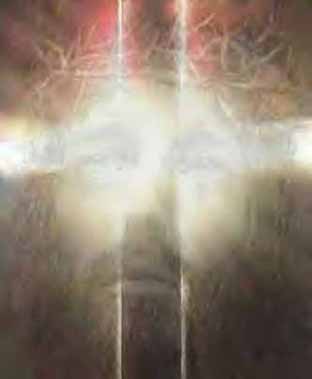
Jesus
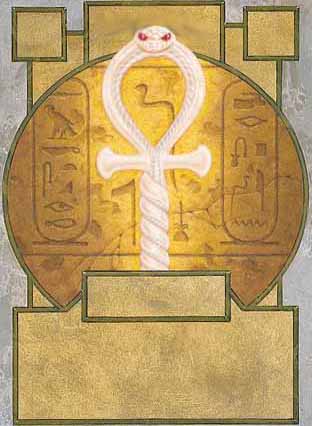
Ankh
>

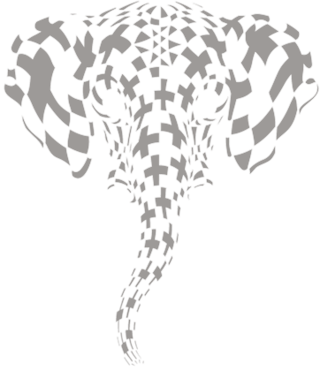
Trumpet
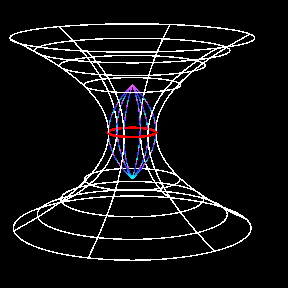
Time no longer exists and consciousness revolves/evolves back to light

Funnels and Tunnels and Grids Created by Spiraling Cones,

Horns (Creation Harmonics) Sacred Geometry SG - StarGates
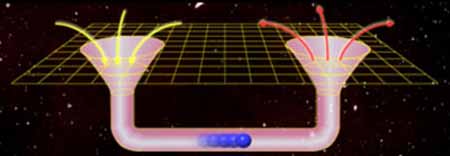
Wormholes, Grids, Time Travel


Large Hadron Collider (LHC) has produced record-breaking high-energy particle collisions BBC - March 30, 2010
Scientists at the world's biggest atom smasher at CERN said they had collided protons at record power, mimicking conditions close to the Big Bang that created the universe.
Hadron Collider breakthrough as beams collide CNN - March 30, 2010
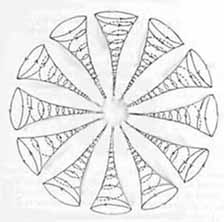
12 Around 1

Djed Pillar
Exercise 1: Relax. Place your cursor at the bottom of the djed pillar. Very slowly move your cursor upward. Do you feel the energies rise in your body? Keep going upward to the center of the alchemy wheel just above, then close your eyes and wait for an image, tone, or whatever is shown.
Exercise 2: There are 13 horizontal white bars the last of which is below the head. Start again ... Very very slowly move your cursor upward. As you pause on each white bar (step) ... count the numbers with 1 as the bottom bar ... feeling the energies on each bar as you ascend. 13 takes you out.
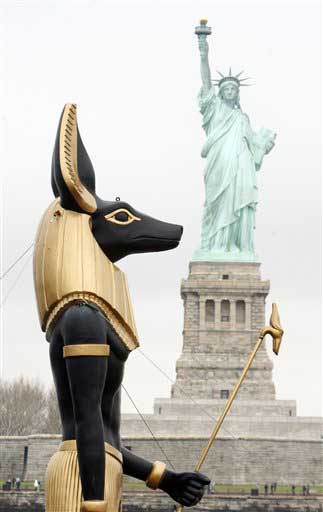
Egyptian Exhibit Comes to New York City - The Barge in Ancient Egypt - More
The Was ("power") sceptre is a symbol that often appeared in relics, art and hieroglyphics associated with the Ancient Egyptian religion. It appeared as long, straight staffs, with a stylized animal head on top and a forked end. Was scepters were used as symbols of power or dominion, and were associated with the gods (such as Set or Anubis) as well as with the pharaoh. Was scepters also represent the typhonic or Set-animal (the mascot of the Egyptian god Set). In later use, it was a symbol of control over the force of chaos that Set represented.
In a funerary context the was-sceptre was responsible for the well-being of the deceased, and was thus sometimes included in the tomb equipment or in the decoration of the tomb or coffin. The sceptre is also considered an amulet. The Egyptians perceived the sky as being supported on four pillars, which could have the shape of was-sceptres. The 'was'-sceptre is also the symbol of the fourth Upper Egyptian nome, the nome of Thebes (called 'Waset' in Egyptian). Was scepters were depicted as being carried by gods, pharaohs, and priests. They commonly occur in paintings, drawings, and carvings of gods, and often parallel with emblems such as the ankh-sign and the djed-pillar.
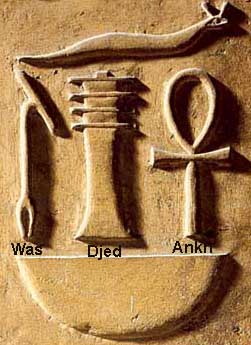
Remnants of real Was scepters have been found, constructed of faience or wood, where the head and forked tail of the Set-animal are visible, with the earliest examples dating back to the times of the first dynasty. The Was (ws) is also the Egyptian hieroglyphic character that stands for a word meaning power.


Djed Pillar and The Egyptian Barge
Funnels and Tunnels, Cones and Tones, Harmonics of Creation
Sacred Geometry and Stargates
Stargates are Doorways or Portals to the Other Side

3,500-year-old false door to afterlife from ancient Egyptian tomb found
PhysOrg - March 29, 2010
A large red granite false door from the tomb of an ancient queen's powerful vizier has been discovered. The carved stone door -- which ancient Egyptians believed was the threshold to the afterlife -- was unearthed near the Karnak Temple in Luxor and belongs to the tomb of User, a powerful advisor to the 18th dynasty Queen Hatshepsut who ruled Egypt between 1479 BC and 1458 BC, was the longest reigning female pharaoh. The door, 1.75 metres (5.7 feet) high and 50 cm (19 inches) thick, is engraved with religious texts and various titles used by User, including mayor of the city, vizier and prince.